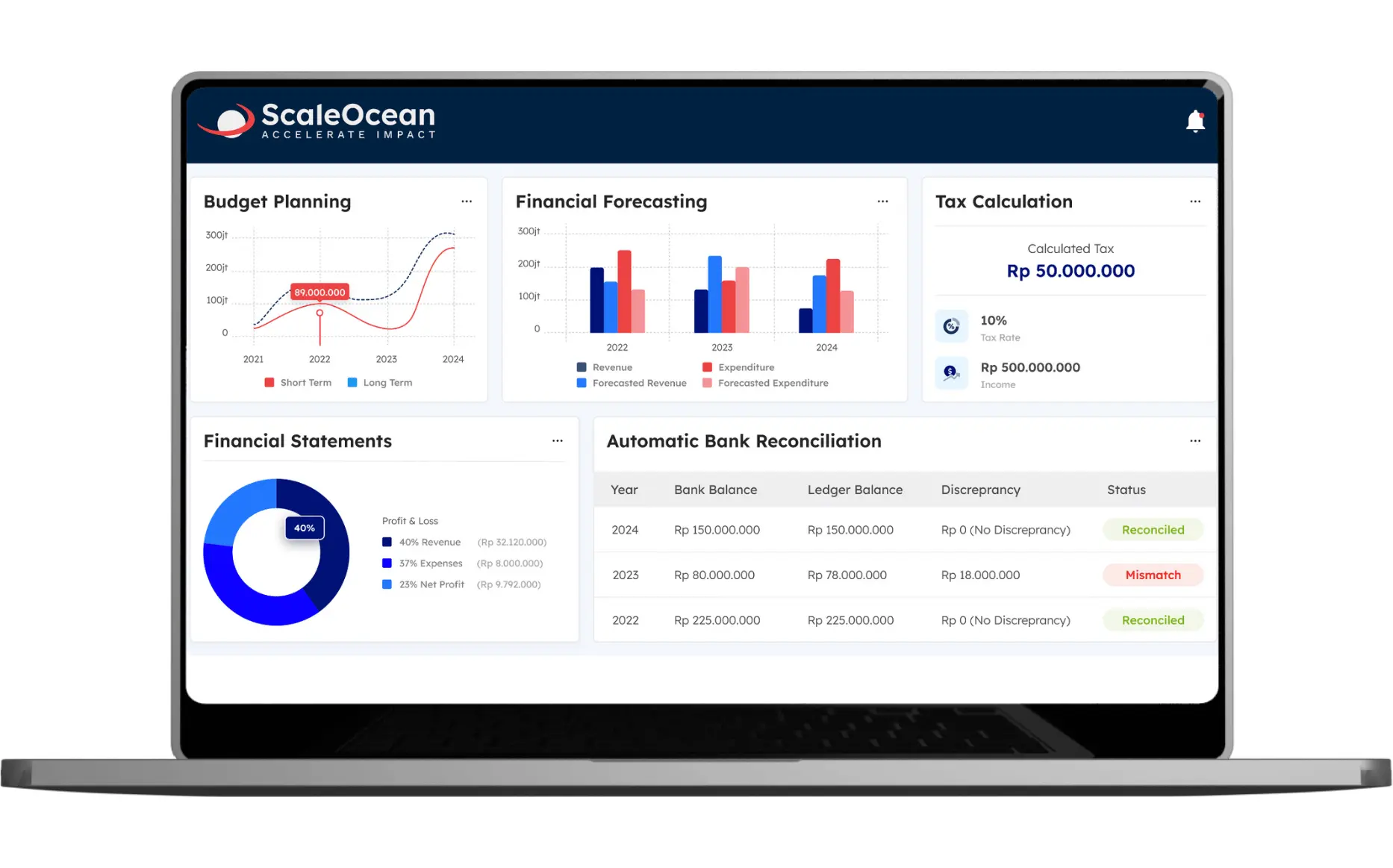Opportunity cost is a key concept in economics and business decision-making, representing the value of the next best alternative forgone. In Singapore’s competitive market, understanding trade-offs is essential for resource optimization and growth. According to MTI Singapore, the US and China are major trading partners, with some local businesses in Singapore impacted by shifting trade dynamics. As businesses adapt, recognizing opportunity costs becomes crucial for making informed decisions and boosting profitability.
This article investigates how opportunity cost influences business decisions in a variety of industries, offering practical insights on how businesses might improve resource allocation choices. We’ll go over the significance of assessing opportunity cost, the tools available for assessment, and real-world instances of how it affects strategic decisions.
- Opportunity cost is the value of the next best alternative forgone when making a decision, highlighting the trade-offs between different choices. It helps businesses understand what is sacrificed when one option is selected over another.
- The formula for calculating opportunity cost is: Opportunity Cost = Return on Best Foregone Option – Return on Chosen Option. This formula allows businesses to assess the potential benefits they miss by choosing one alternative over another.
- Opportunity cost influences resource allocation, time management, and strategy, helping businesses make better decisions across various operational areas.
- ScaleOcean ERP automates opportunity cost calculations, providing insights into trade-offs and financial data to support strategic decision-making and growth.

What is Opportunity Cost?
The opportunity cost is the expense of passing up the next best alternative while making a decision. It shows the worth of the option you did not select, indicating the trade-offs associated with each selection. Simply put, it’s what you give up in order to choose one option over another.
For example, if you choose to spend your weekend working on a side project rather than taking a vacation, the opportunity cost could be the relaxation and satisfaction you would have had while traveling. Similarly, in business, if a corporation decides to develop a new product, the cost may be the revenue lost by not improving its present items.
Why is Opportunity Cost Important in Business Decision-Making?

Understanding opportunity cost is critical for organizations because it allows them to align their decisions with their business financial goals. Companies can better analyze the possible benefits of various options by taking into account what is sacrificed. It is important in business decision-making since it helps to maximize resources, time, and profitability. For example, deciding between two profitable initiatives necessitates a detailed examination of their respective returns.
Without understanding opportunity cost, a company may make decisions that limit growth or result in wasteful resource utilization. Recognizing it can help prevent poor resource allocation. Businesses can pivot rapidly and take advantage of superior, potentially more profitable alternatives by recognizing whose resources—time, capital, or talent—are tied up in one option.
The Formula and Calculation of Opportunity Cost
Understanding the formula for opportunity cost is critical for making informed business decisions. Companies can assess the potential trade-offs between various options by estimating it. The formula for determining opportunity cost is simple but effective:
Opportunity Cost = Return on Best Foregone Option – Return on Chosen Option
Put simply, it compares the projected return from the next best option against the return from the option selected. This enables firms to decide whether they are making the best decision. For example, if a corporation decides to invest in a new product line with the expectation of a $100,000 return, but the best alternative (enhancing an existing product) could have yielded $150,000, the opportunity cost is $50,000—the potential gain from not selecting the better option.
How to Measure Opportunity Cost with Tools and Techniques
Businesses use financial models and decision-making frameworks to determine opportunity cost. Companies can use tools like Net Present Value (NPV) and Cost-Benefit Analysis (CBA) to assess the prospective returns on their investments. These models are critical for evaluating alternatives and making strategic decisions. By taking into account cost benefit analysis, businesses can prevent inefficient allocations.
NPV, for example, computes the present value of future cash flows while accounting for costs. Many businesses use cloud accounting software to track these financial metrics in real time, ensuring seamless access to critical data from anywhere. It enables organizations to estimate the profitability of various investments. In contrast, cost-benefit analysis examines the costs and benefits of alternative decisions. This strategy takes into account what may be lost by selecting one choice over another.
Example of Opportunity Cost in Business
Opportunity cost plays a key role in business decisions, affecting profitability and growth. Economic shifts, like changes in the Consumer Price Index (CPI), can influence cost structures and strategic choices. According to DOS Singapore, the base period for CPI is 2024, requiring businesses to consider inflation’s impact on purchasing power. Understanding these trade-offs is essential for informed decision-making. Here are two examples of opportunity cost in business:
1. Investing in a New Product Line vs. Enhancing Existing Offerings
A corporation deciding whether to introduce a new product line or improve an existing one confronts a considerable opportunity cost. Choosing to invest in the new product may result in missing out on revenue that could have been made by improving the existing product. The decision has implications for both short-term gains and long-term growth possibilities.
2. Hiring Staff vs. Investing in Automation
A startup must determine whether to hire additional employees or invest in automated systems. The opportunity cost here entails weighing the immediate cost of recruiting humans against the long-term savings and efficiency offered by automation. Investing in automation may lessen the need for extra personnel, providing a more scalable alternative for expansion.
Opportunity Cost Structure: How It Affects Different Business Areas
Opportunity cost has an impact on many aspects of a company, including resource allocation and long-term strategy. Understanding how it affects various elements of operations allows organizations to make more educated decisions. Opportunity cost is important in many areas, including cash, time, and personnel. Here’s a more detailed look at its structure across various areas:
1. Components
Opportunity cost includes a variety of factors like time, capital, and personnel, all of which influence decision-making. Time spent on one endeavor reduces the potential to pursue others. Capital allocated to one program may have been used elsewhere. Manpower allocation is also a factor in obtaining peak efficiency.
2. Types of Decisions
Opportunity cost influences various business decisions, such as investment and staffing. When evaluating investments, the potential returns must be considered, and a profit and loss statement helps assess the financial impact. Staffing decisions often involve choosing between hiring more people or automating. In production, it affects whether to develop new products or enhance existing ones.
3. Multi-Dimensional
It is more than just money; it includes non-monetary variables like time and reputation. Time spent on one endeavor may result in missed opportunities for networking or forming collaborations. Focusing on short-term profitability can have an impact on the company’s reputation. These non-financial expenses are critical for making strategic company decisions.
How Opportunity Cost Differs from Marginal Cost and Risk Cost
Opportunity cost, marginal cost, and risk cost are all essential factors in business decision-making. While they are related, each notion addresses various aspects of costs and trade-offs. Understanding the differences between them is critical for efficient resource allocation. Here’s a closer look at their differences:
1. Marginal Cost
Marginal cost is the incremental cost of producing one more unit of a product or service. Unlike opportunity cost, which considers what is sacrificed, marginal cost is concerned with the direct cost of expanding output. It enables businesses to determine whether growing production is financially sustainable. This metric is critical for firms looking to better understand manufacturing cost efficiency.
2. Risk Cost
Risk cost refers to the potential cost of uncertainty in decision-making, focusing on the possibility of losing resources due to unforeseen circumstances. In contrast, opportunity cost deals with trade-offs and what is sacrificed by choosing one option over another. While risk cost addresses unpredictability, it can also result in increased operating cost, as businesses may need to allocate extra resources to manage potential disruptions.
3. Opportunity Cost
Opportunity cost is a strategic term that measures the worth of wasted opportunities. While marginal and risk costs concentrate on immediate, quantifiable financial consequences, it entails weighing trade-offs. It takes a long-term perspective, whereas marginal and risk costs focus on short-term financial issues.
The Risks of Ignoring Opportunity Cost
Failure to evaluate the opportunity cost can result in poor business decisions and missed opportunities. For example, a firm may invest in a profitable project when resources could have been better spent on a more rewarding opportunity.
When firms neglect the relevance of this concept, they risk overcommitting resources or losing out on possible rewards from alternative channels. For example, choosing a less profitable project may impede expansion, whereas ignoring automation may result in greater long-term operational costs.
Leverage Opportunity Cost in Your Strategy with ScaleOcean Accounting Software

Accounting software like ScaleOcean ERP helps businesses calculate opportunity costs by integrating financial data and comparing alternative investments or strategies. This automation provides valuable insights into trade-offs, cash flow, and resource allocation. With ScaleOcean, businesses can make more informed decisions, optimizing their profitability. It ensures a strategic approach to financial planning and growth.
Use our free demo to learn more about how ScaleOcean may help you optimize your company strategy. The CTC grant makes ScaleOcean more accessible to firms seeking to improve their financial management systems. Learn firsthand how it may simplify operations and improve decision-making. Here are the main characteristics of ScaleOcean software:
- Real-Time Financial Data, Provides real-time financial insights to help businesses evaluate opportunity costs and make informed decisions.
- Automated Financial Reports, Automates key financial calculations and reporting, ensuring accurate, timely data for better opportunity cost analysis.
- Integrated Strategic Modules, Connects accounting with other business functions, optimizing resource allocation and decision-making across departments.
- Customizable Business Intelligence, Built-in BI tools offer customizable analytics to evaluate financial trade-offs and opportunity costs quickly.
- Seamless Business Integration, Integrates with all business operations, enabling better comparison and evaluation of different financial strategies.
Conclusion
Businesses must consider opportunity cost while making decisions in order to maximize resources and increase profitability. Companies can make better decisions by considering trade-offs, resulting in more efficient use of time, capital, and labor. This method guarantees that organizations focus on the most important prospects.
Businesses in Singapore can use accounting software such as ScaleOcean to better examine their alternatives and calculate opportunity costs. Companies that make data-driven decisions can increase their profits and improve their overall strategy. Use ScaleOcean to improve decision-making and profitability.
FAQ:
1. What is opportunity cost and its example?
Opportunity cost refers to the value of the alternative that is not chosen when a decision is made. For instance, if you decide to use your savings for a vacation instead of investing in the stock market, the opportunity cost would be the potential gains you could have earned from that investment.
2. What is the short meaning of opportunity cost?
Opportunity cost is the value of the best alternative that is given up when making a decision. It helps measure what is lost by choosing one option over another, guiding better decision-making by comparing the possible benefits of different choices.
3. How do you calculate opportunity cost?
To calculate opportunity cost, subtract the return from the selected option from the return of the next best alternative. The formula is:
Opportunity Cost = Return on Best Foregone Option – Return on Chosen Option
This method helps quantify the sacrifice involved in making a choice.
4. What is the opportunity cost in A-level economics?
In A-level economics, opportunity cost is the value of what is given up when a choice is made. It emphasizes the trade-offs involved in decision-making, helping students understand how limited resources force individuals, businesses, and governments to make choices based on alternative costs.







 PTE LTD..png)
.png)

.png)








.png)
.png)
















